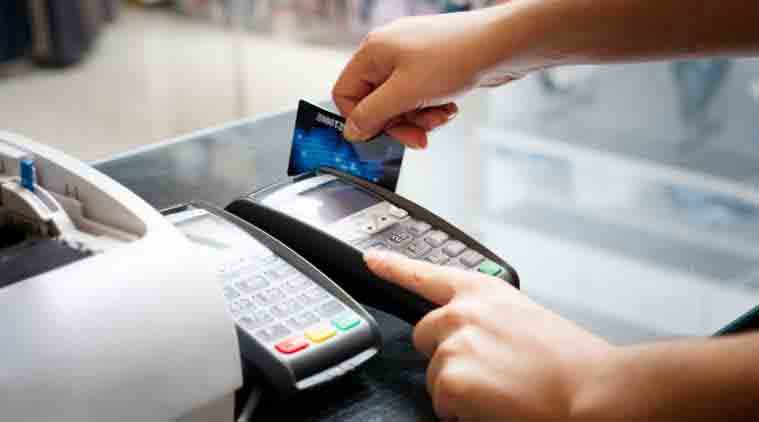Digital Transactions: Aadhaar-enabled merchant payment system a user-friendly tool
In this payment system, customer needs only Aadhaar; as soon as the number is keyed in & customer provides his fingerprint, the transaction is all done.
Is ‘cashless’ the right option for India or ‘less-cash’? Even if we play with semantics and say that meaning of cashless is zero cash and is the ideal state for India, we have to necessarily embrace less-cash options as the starting point of the journey to attain that Nirvana state of ‘cashless’. And, it must begin in the payment space.
Cash or currency is the easiest and most-practiced forms of exchange of value. To reduce its usage, one has to understand the characteristics of the users, uses and the ecosystem. This helps devise appropriate solutions and fast-tracks adoption.
Cash is popular because it is easy to use, does not require any additional machines for its storage and use, beyond a wallet or a safe and the security or lack of it is evident immediately due to its touch and feel. It is universally acceptable. How much you have is quickly known by counting the currency.
In other words, simplicity, trust as to its acceptance, ability to secure it as per tools in your hand and information are the features of currency and cash, which make it popular. So, any alternatives to it, must have these features to be quickly adopted by users.
For our purpose, especially in the demonetised era, let us focus on new e-payments as tools to substitute cash so that we achieve ‘less-cash’ state. In traditional mode, you buy a product or service, and pay by cash or using the card. As we know, cash needs to be discouraged and cards somehow have scalability and expensive infrastructure deployment issues. This is where the Aadhaar-enabled payment systems are coming with highly innovative solutions, both in end point, security and customer experience. Simultaneously, it is addressing the pain points of other competing solutions.
A payment solution requires end-point interface, secure authentication, funding, settlement and delivery and MIS. All of these are embedded in currency, but are delivered in steps in an e-payment solution. Wallets, mobile banking and point of sale (PoS) machines all deploy various designs to combine these steps. However the Aadhaar-enabled payment system, especially the merchant payment system, is set to revolutionise this space especially the payment space in rural India where there is a typical lag in adoption of initiatives. As seen in the following paragraphs using a case study from SBI, this is already a reality.
State Bank of India (SBI), has already launched an innovative solution focused on rural areas for facilitating digital payments between merchants and consumers.
The solution is very simple. Aadhaar number of both the merchant and the consumer is the only pre-requisite. Their Aadhaar numbers should have been linked to their bank accounts. As a majority of villagers have been covered in the recent financial inclusion (FI) campaigns and have their bank accounts opened using the Aadhaar identity, the solution starts with a ready ecosystem for authentication.
Merchant keys in the Aadhaar number, provides the fingerprint on the biometric device attached to the simple android-based smartphone which runs the app and she is all set to receive and send payments! The customer does not need anything except his Aadhaar number. As soon as the Aadhaar number is keyed in and the customer provides his fingerprint, the transaction is all done.
The smartphone that has captured the payment data and biometrics then connects to the FI gateway application/NPCI UIDAI server that authenticates and processes the transaction. The account credits/debits are put through the core banking systems (CBS) through internal APIs (Application Programming Interface between FI and CBS) and the experience is seamless, with SMS notifications to both sides.
This has combined security protocols of the Aadhaar system and the Know Your Customer (KYC) norms of banks, enabling a two-tier security system without any need for building a new system. Both ways, the payment transaction is secured, instant and efficient.
All Digital will be possible when systems such as Aadhaar-enabled payments are adopted and scaled up. Merchants are opinion leaders and harbingers of such less-cash ecosystem. Once they get comfortable, they will not only readily accept ‘e’ modes but also refrain from keeping ‘unproductive’ safety stock of cash. There are benefits for the common man in the village, too, both in physical comfort and in the form of being part of a connected economy where his saving, spending and income behavior is captured for national policy making and commercial innovations.
While institutions like SBI will keep on innovating and rolling out solutions, there still remains a number of challenges. First is the challenge of connectivity. All technologies, both of telecoms and proprietary or government-owned, must be adopted in quick time.
Second is the local language and voice-assist features. Third is the necessity of a robust and common dispute resolution and grievance redressal mechanism. Fourth is feature innovation and enhanced security for optional use by users for high-value or specific outlet transactions.
In spite of challenges, due to its robust back end and security, simple interface and the tail wind due to a ready authentication platform form UIDAI, Aadhaar-enabled merchant payment system is set to revolutionise the Indian payment space. Quite likely, it will be instrumental in the early sunset of many other competing e-payment solutions.
Source by indianexpress…


